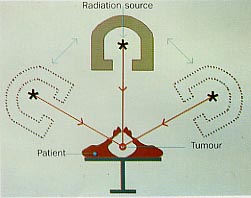pdf Exposure of radiotherapy operator to linear accelerator (158 kB)
Description of the incident
A patient was in the course of treatment using a 25 MeV linear accelerator. Between two irradiations, an operator (A) entered the room to locate an accessory, however a second operator (B), at the console, did not see her enter.
Operator B closed the door and restarted the treatment. Operator A, remained in the treatment room and did not realize that the irradiation was in progress. After a few seconds, she interrupted the treatment by opening the door (which automatically terminates the irradiation).
Although the qualified radiation protection officer was called, he did not initiate any specific emergency procedures. He did reassure operator A and, because she was already subject to monitoring as a classified person, he decided not to perform any other tests. Furthermore, he did not contact the RP authorities.

Radiological consequences
Operator A was the only exposed person (apart from the patient). The development of her passive dosimeter showed a whole body dose of about 1 mSv (the dose rate used during this type of treatment can be up to 1 Sv/min).
Note: the accelerator also produce a non-negligible neutron field. For this incident, taking into account the position of the operator and the exposure, the neutron component of the dose is estimated to be no more than 0.1 mSv.
Lessons to be learned from the incident
Better communication between the operators (the one at the console and one that entered the room) could have prevented this incident. A person entering a radiotherapy room should always make their presence known to the person at the control console.
In addition, there should be some means of viewing the area from the control panel (eg by video camera surveillance).
The wearing of a passive dosimeter is compulsory for the radiotherapy staff. In this case, if the operator also had a real-time dosimeter, she would have immediately noticed that the patient treatment was underway.
When the irradiation is in progress during the treatment, it makes a lot of noise – and normally the operator should have realized that it was in operation. Nevertheless, suitable pre-warning signals (audible and/or visible) would have enabled the operator to actuate the emergency stop button (present in all radiation therapy rooms by law) before the beginning of the exposure.
In this case, it would have been useful to reconstruct the dose received by the operator by simulating the exposure conditions (including the use of appropriate phantoms) to determine the gamma and neutron doses to the body and to extremities.
pdf Exposure of radiotherapy operator to linear accelerator (158 kB)
